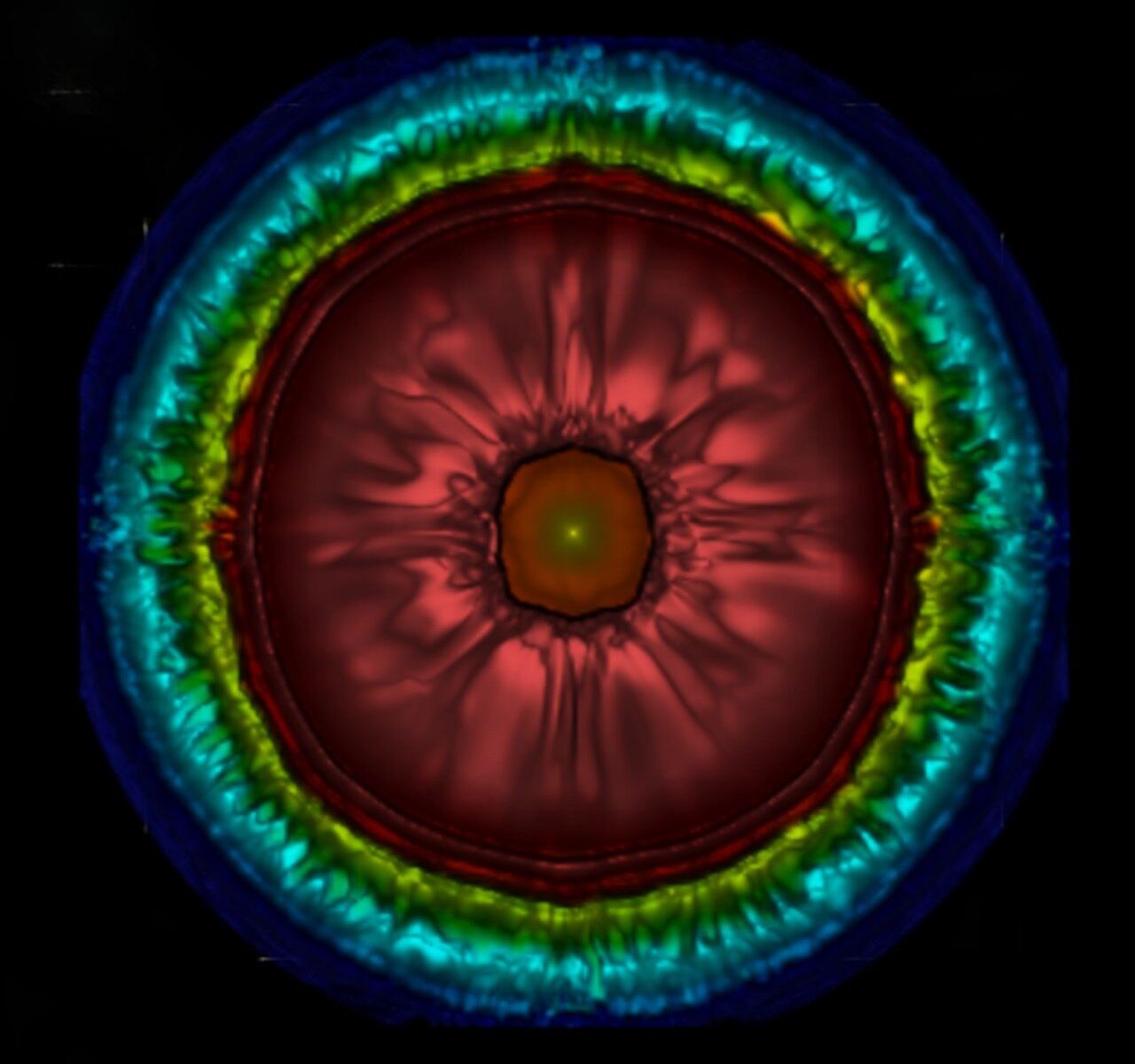When the largest stars in the Universe run out of fuel, they detonate as supernovae, collapsing inward and leaving behind a neutron star, black hole, or just wholly vaporizing. What’s happening inside the unfolding explosion is difficult to understand, and especially so for so-called exotic supernovae, the rarest and brightest types of stellar explosions.
To better understand the dynamics of these rare supernovae, astronomers are using powerful supercomputers to simulate the process. After years of real-world research and millions of hours of supercomputer computing time, researchers have completed the first ever high-definition, 3D hydrodynamic simulation of exotic supernovae.
Ke-Jung Chen at Academia Sinica Institute of Astronomy and Astrophysics (ASIAA) in Taiwan, led an international team and used supercomputers at the Lawrence Berkeley National Laboratory and the National Astronomical Observatory of Japan. They published their findings in The Astrophysical Journal.
Supernovae are brilliant and powerful explosions that mark the end of massive stars’ lives, and astronomers have a relatively comprehensive understanding of these explosions. For example, for the majority of supernova, their intrinsic brightness is always well-known, and scientists have been able to create computer models of what happens during a supernova explosion.
But in recent years, large scale supernova observations have revealed rare types of cosmic explosions, one of which is tens to hundreds of times more luminous than ordinary supernovae, and the other lasts for extremely long periods of time. Dubbed as exotic supernovae, these rare events challenge and overturn previously established understanding of supernova physics.
Superluminous supernovae are about 100 times brighter than regular supernovae, which typically only maintain their brightness from a few weeks to a few months. Eternally luminous supernovae can maintain their brightness for several years or even longer. Other exotic supernovae exhibit irregular and intermittent variations in brightness.
The suspects for exotic supernova are stars with masses ranging from 80 to 140 times that of the Sun. Scientists say that learning more about these unusual supernovae may hold the key to understanding the evolution of the most massive stars in the universe.
However, modeling what happens during these massive explosions is quite challenging, and in this new paper, Ke-Jung Chen and team said that current models have mainly been confined to one-dimensional simulations.
Using cutting-edge supercomputer simulations and millions of hours of computing time, the researchers were able to model how turbulent structures in the interior of an exotic supernova explosion impact the brightness and explosion structure of the entire supernova.
“Turbulence plays a critical role in the process of a supernova explosion, resulting from irregular fluid motion, leading to complex dynamics,” the team wrote. “These turbulent structures mix and distort matter, influencing the release and transfer of energy, thereby affecting the supernova’s brightness and appearance.”

The team said more research is necessary to further understand exotic supernova, especially since next-generation supernova survey projects will very likely detect more of these events. The Vera Rubin Telescope in Chile is predicted to discover three to four million supernovae during its ten-year survey over a broad range of distances. Additionally, wide-field near-infrared missions such as the Nancy Grace Roman Space Telescope and Euclid will reveal more of these events. Knowing more about them from computer simulation and modeling will help increase our understanding of the deaths of very massive stars.
Source: PhysOrg

